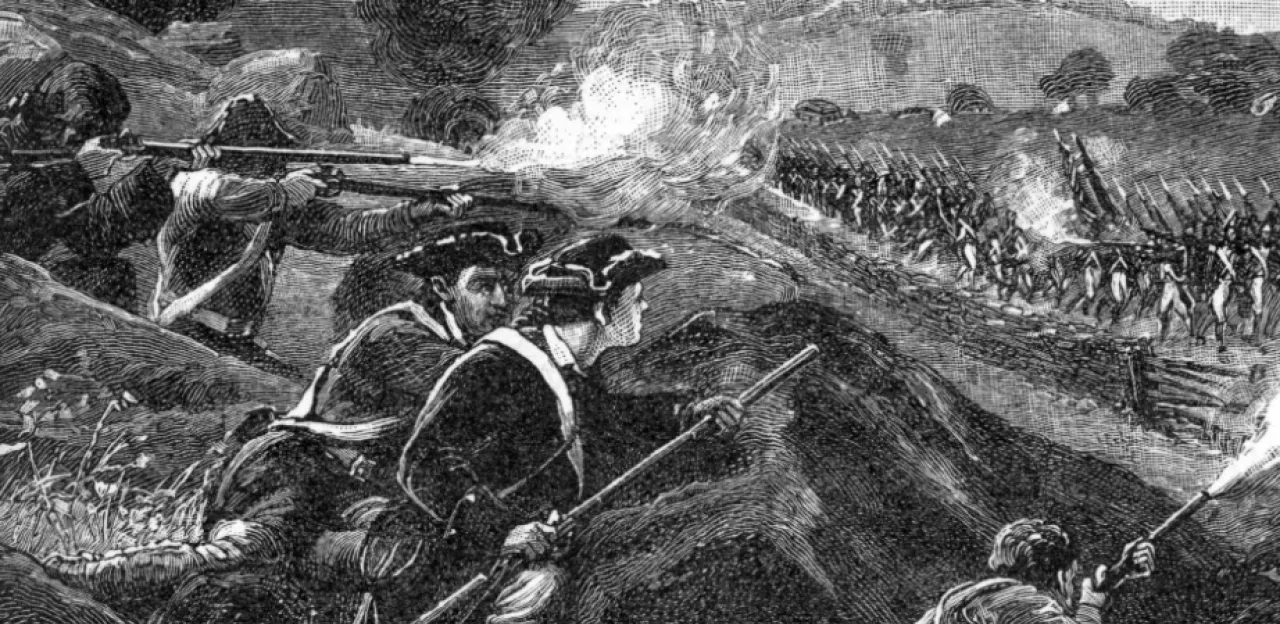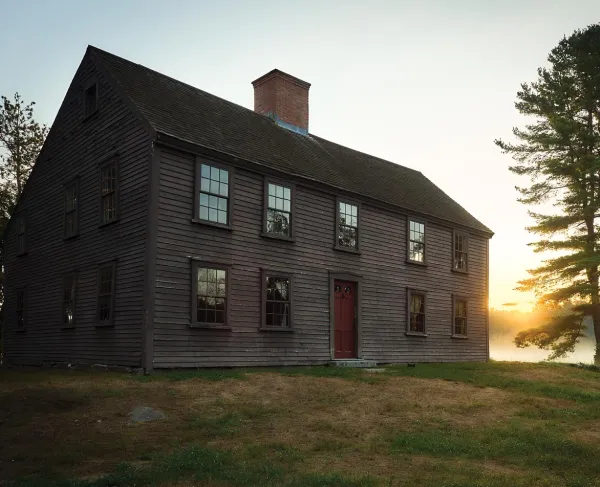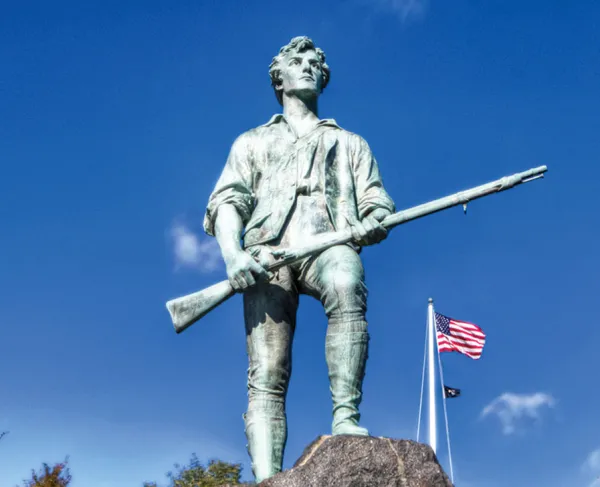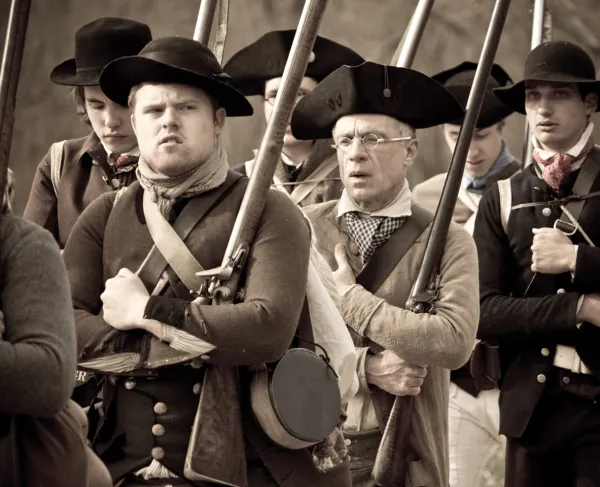Significance of Parker’s Revenge

The battle ground at “Parker’s Revenge” is one of the most important sites along the Battle Road, the route of the British retreat from Concord toward Boston on the afternoon of April 19, 1775. The British had failed to find a large quantity of arms at Concord. News of the British expedition and of the deaths of militiamen on the Lexington Green had spread across eastern Massachusetts. By noon, when the British began their march from Concord, the countryside was filled with angry militia companies.
As the British made their way from Concord back toward Lexington — about eight miles by a narrow road that wound past farms and pastures dotted with rocks and crossed by ditches and stone walls — American militia companies used country paths to intercept and ambush the enemy. A British ensign later wrote: “all the hills on each side of us were covered with rebels.” Americans fired on the British column at Merriam’s Corner, then at Brooks Hill, and a nameless turn in the road that became known as the Bloody Curve.
As the British column reached the line between the towns of Lincoln and Lexington, Capt. John Parker and his Lexington militia were waiting for them. Parker’s company included men who had fought that morning on Lexington Green. Some wore bandages stiffened from the blood of wounds they had suffered in the morning, and they were anxious to revenge themselves and their dead neighbors. Parker’s men confronted the British on a rocky hillside. Waiting until the British were close, they opened fire. The British were staggered, then charged the hill. Parker's men shot down several Regulars before retreating, and lost men of their own. Jedediah Munroe, who had been wounded on the Lexington Green at dawn, was killed.
At Parker's Revenge, the militia demonstrated the kind of courage and determination that sustained American soldiers through the eight years of the Revolutionary War. Parker’s men had been defeated that morning on the Lexington Green, but after the shock of that first battle, they had reorganized, and had waited bravely for the retreating British to renew the battle.
The story of the fight at Parker’s Revenge is the story of the Revolutionary War in miniature. In the Revolutionary War, Americans continuously confronted better trained, better equipped and often more numerous enemies. Americans lost more battles than they won, but they refused to accept defeat. As Nathanael Greene wrote at the war’s end, “We fight, get beat, rise and fight again.” Americans ultimately won their independence by refusing remain beaten.
The site of Parker’s Revenge is the first of many fields where brave American soldiers turned defeat into victory. The brave stand of the Lexington militia at Parker’s Revenge points ahead to the counterattack by Washington’s army at Trenton and Princeton, to the grim determination of Grant’s battered army as it marched south after the Battle of the Wilderness, and to the courage of American troops in the Argonne Forest and Bastogne — and to many other battlefields where brave Americans refused to be accept defeat, and went on to victory.
Special thanks to the Society of the Cincinnati
Related Battles
93
300





